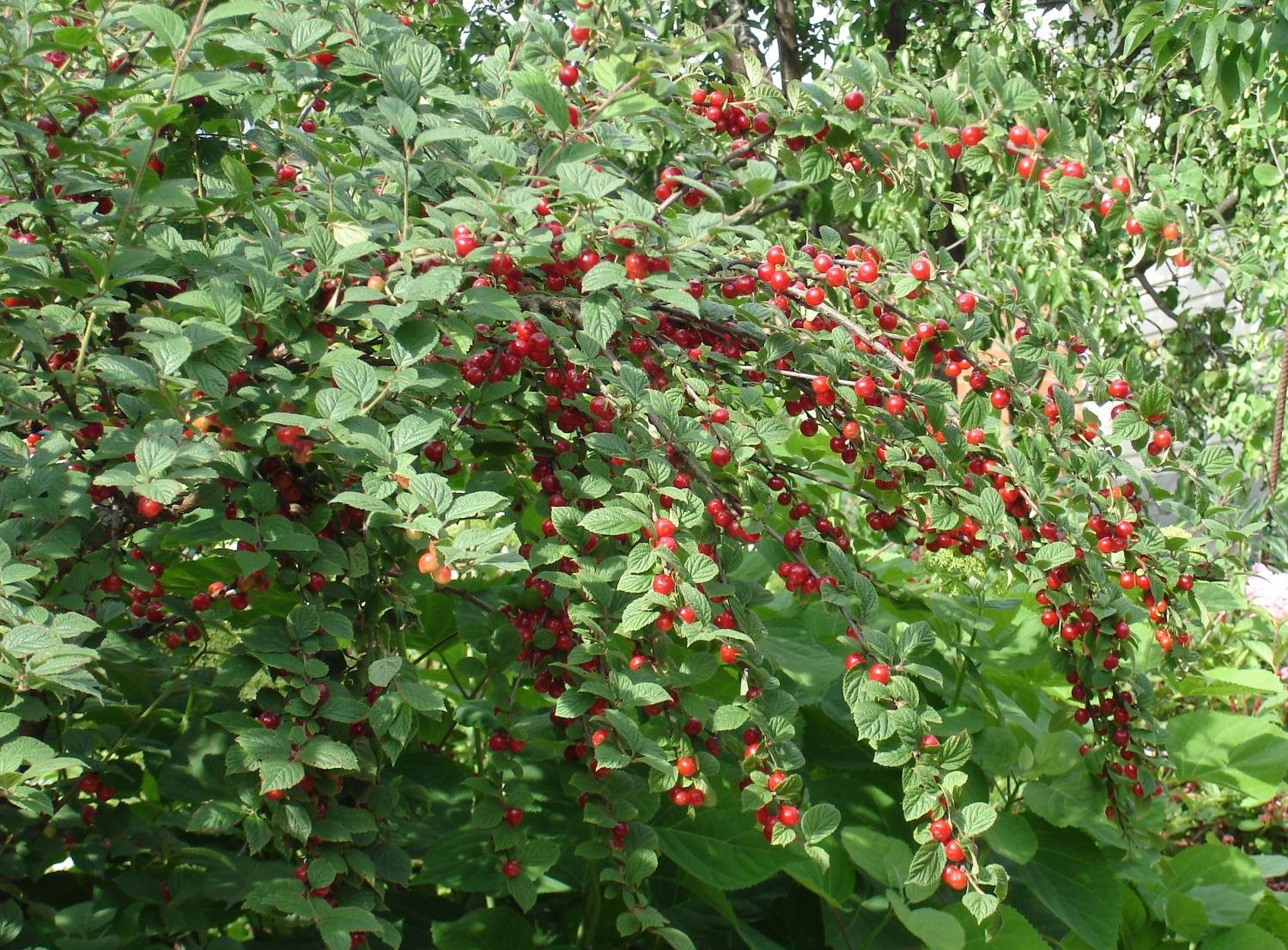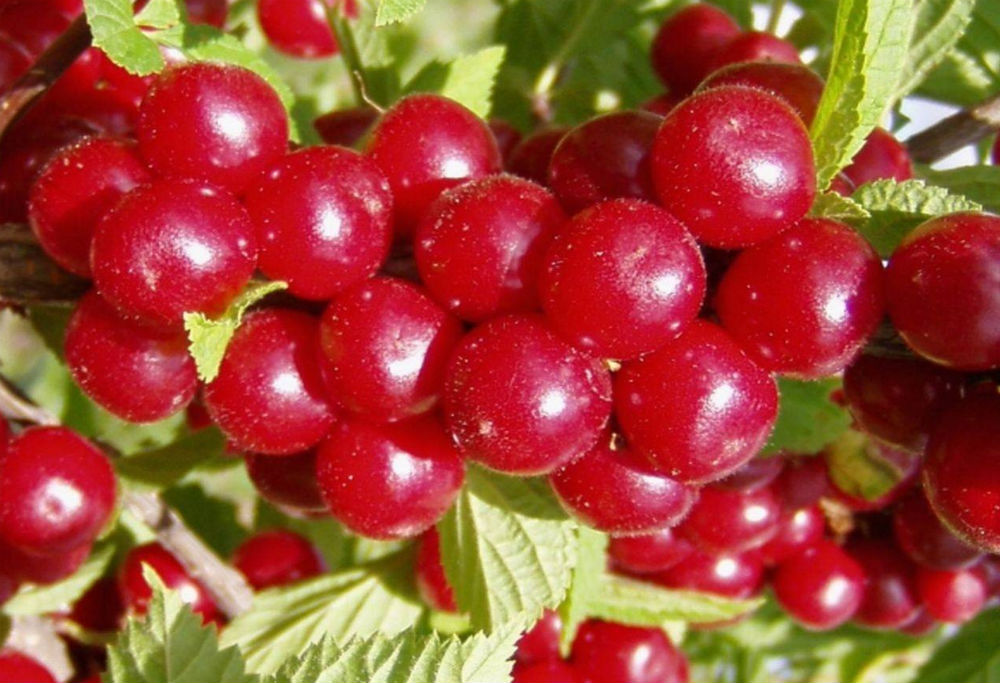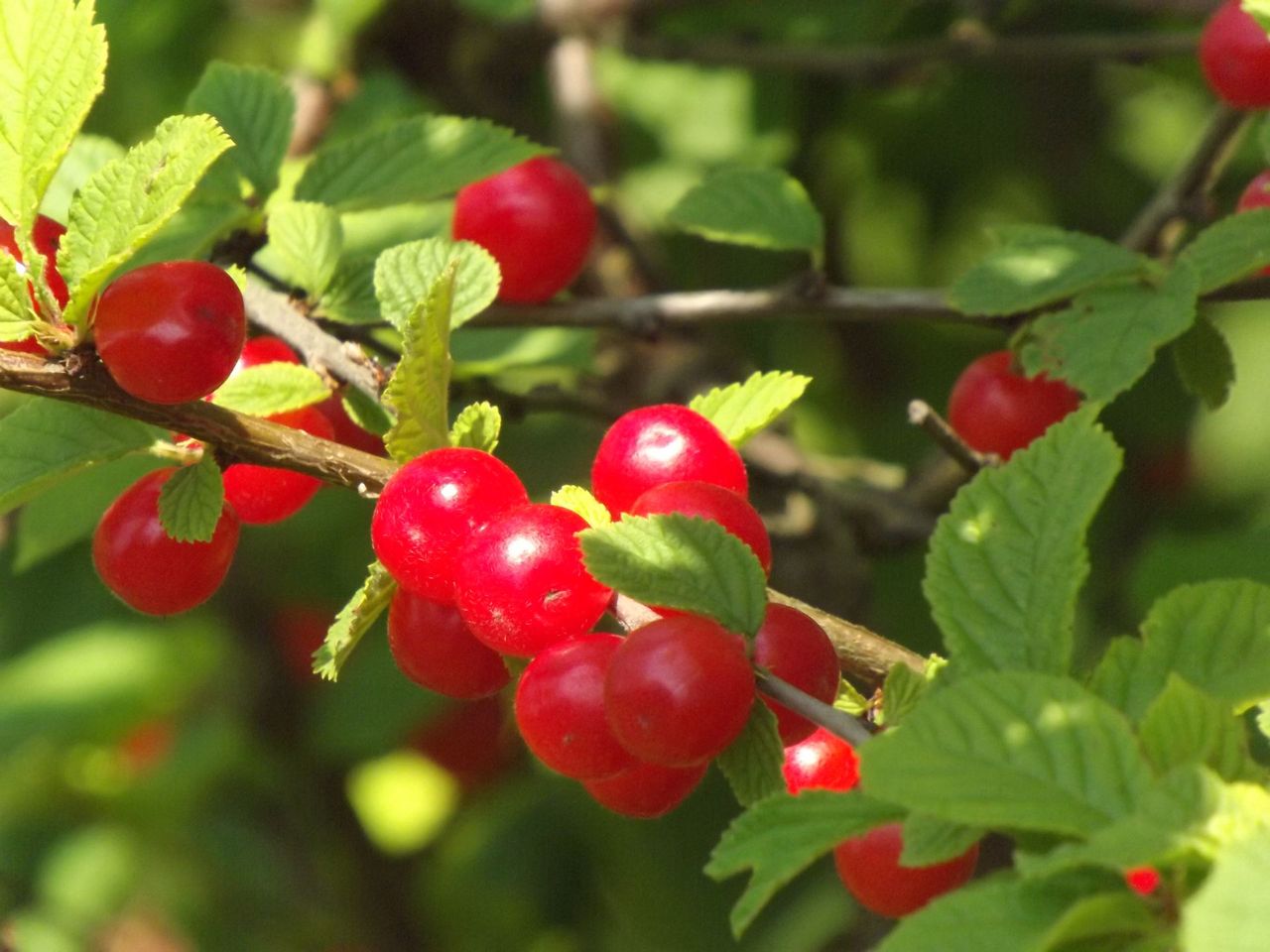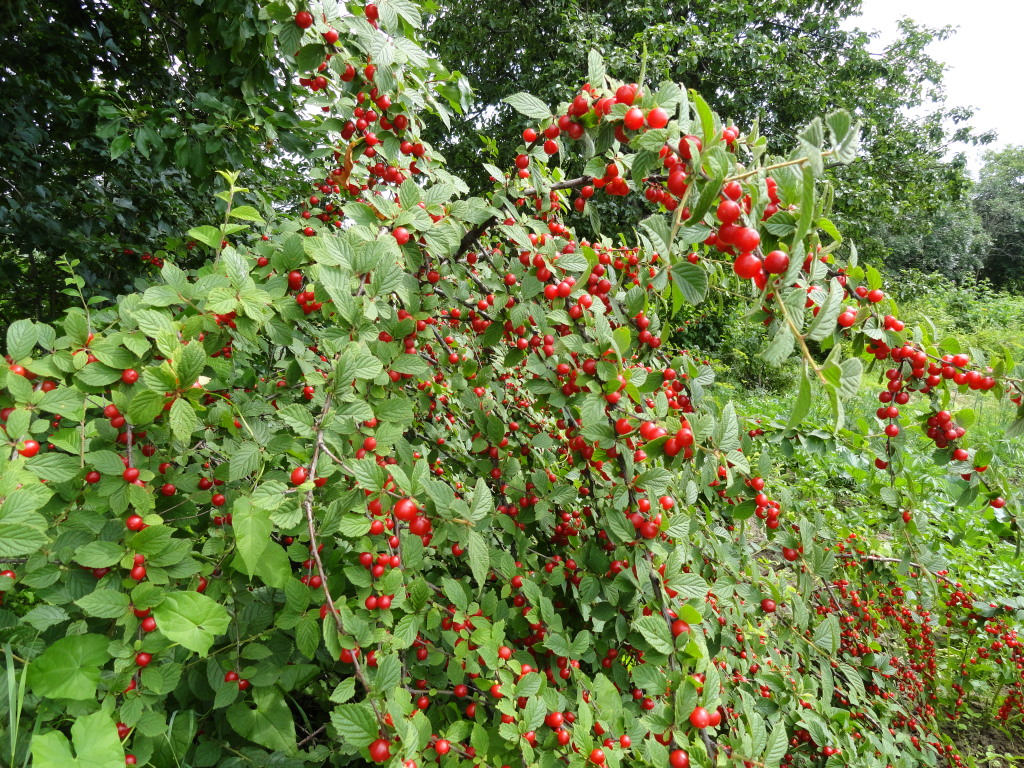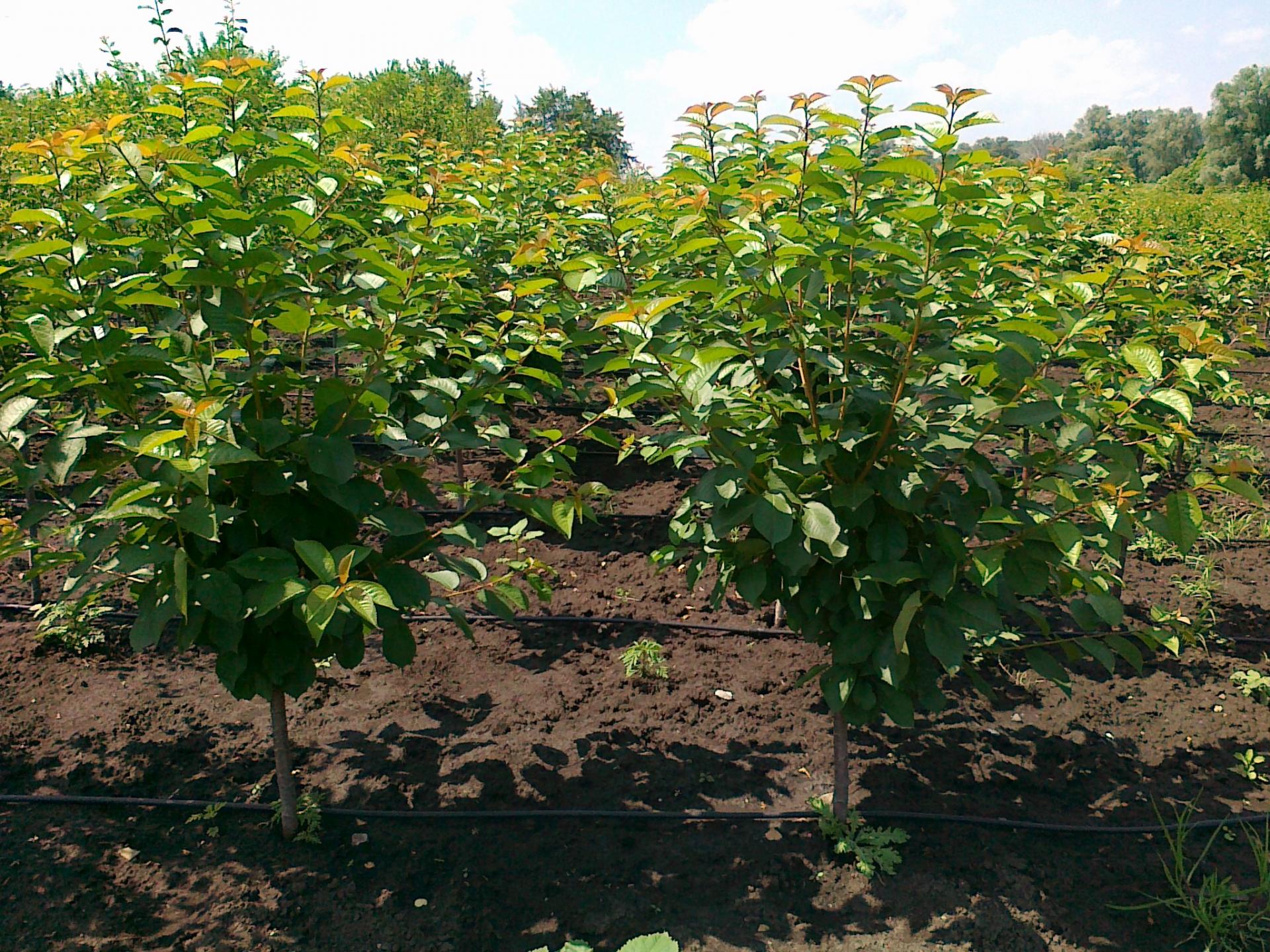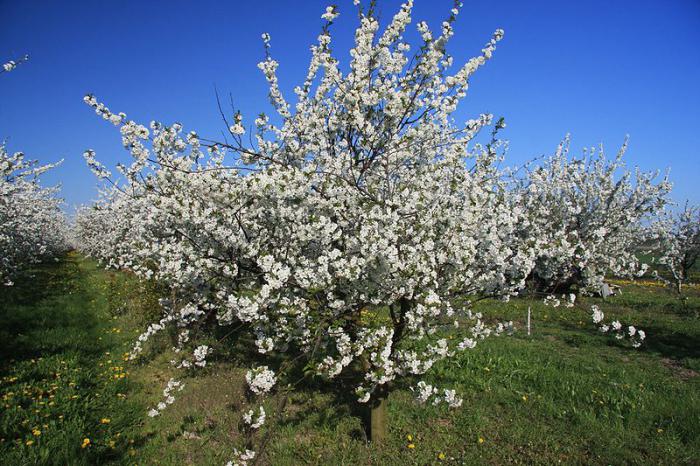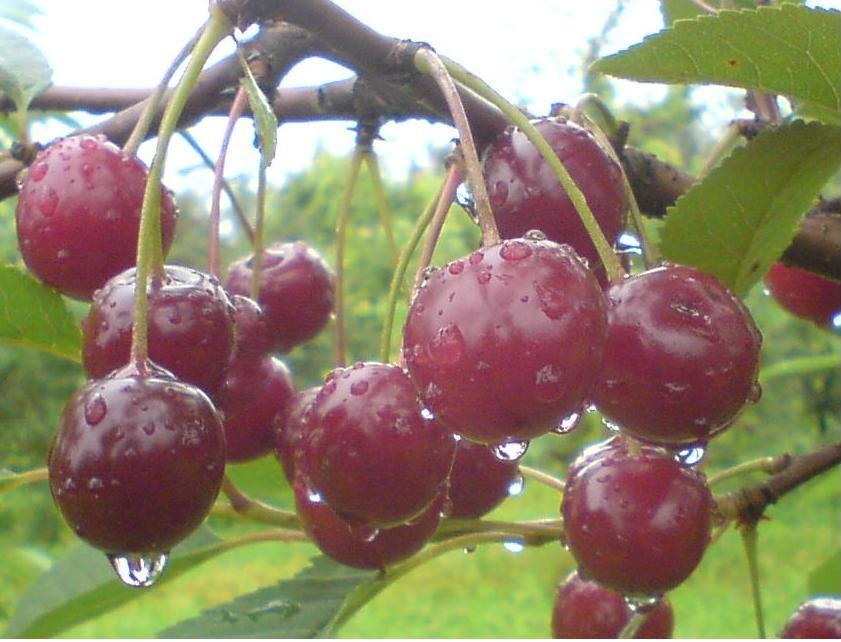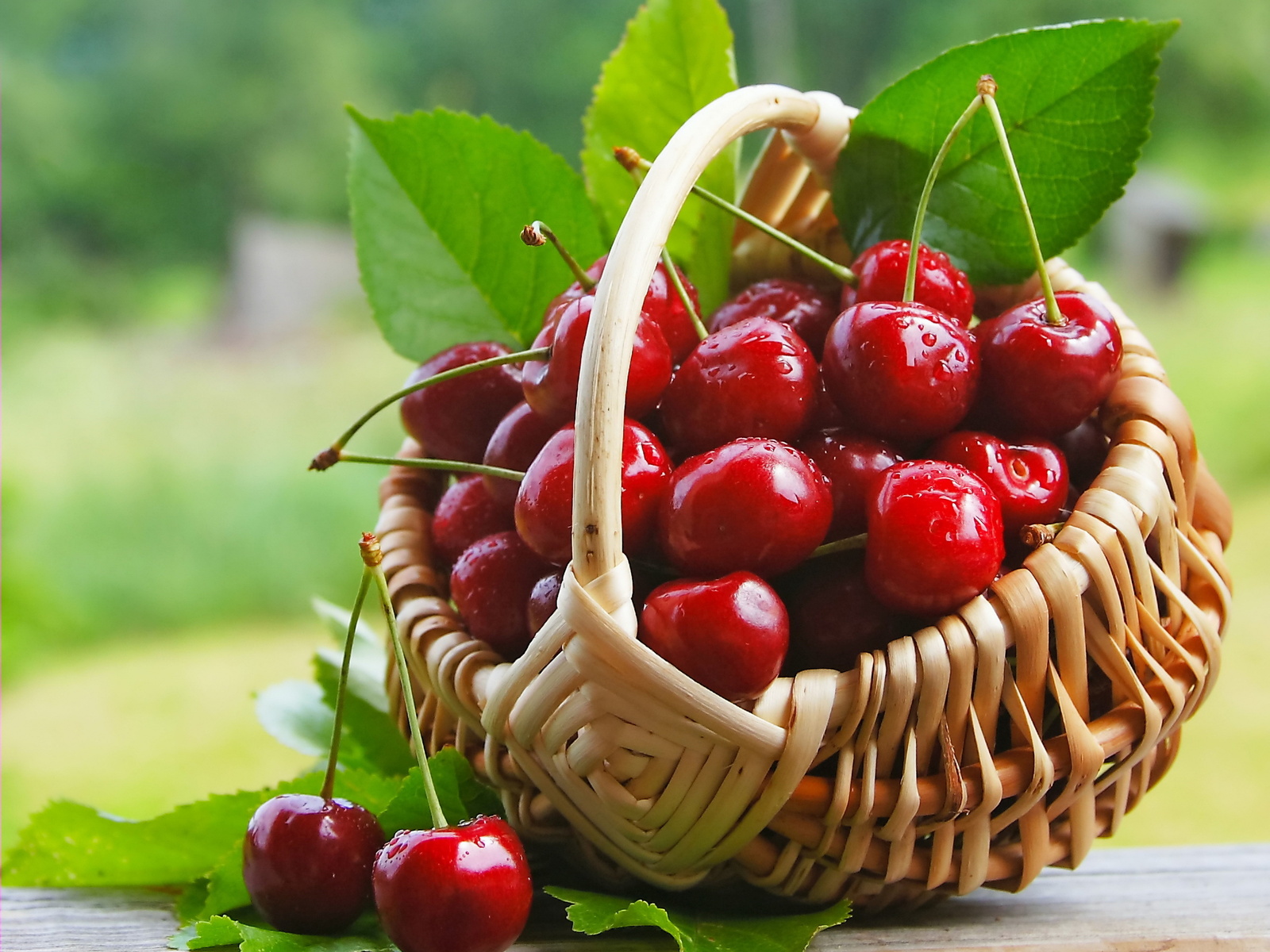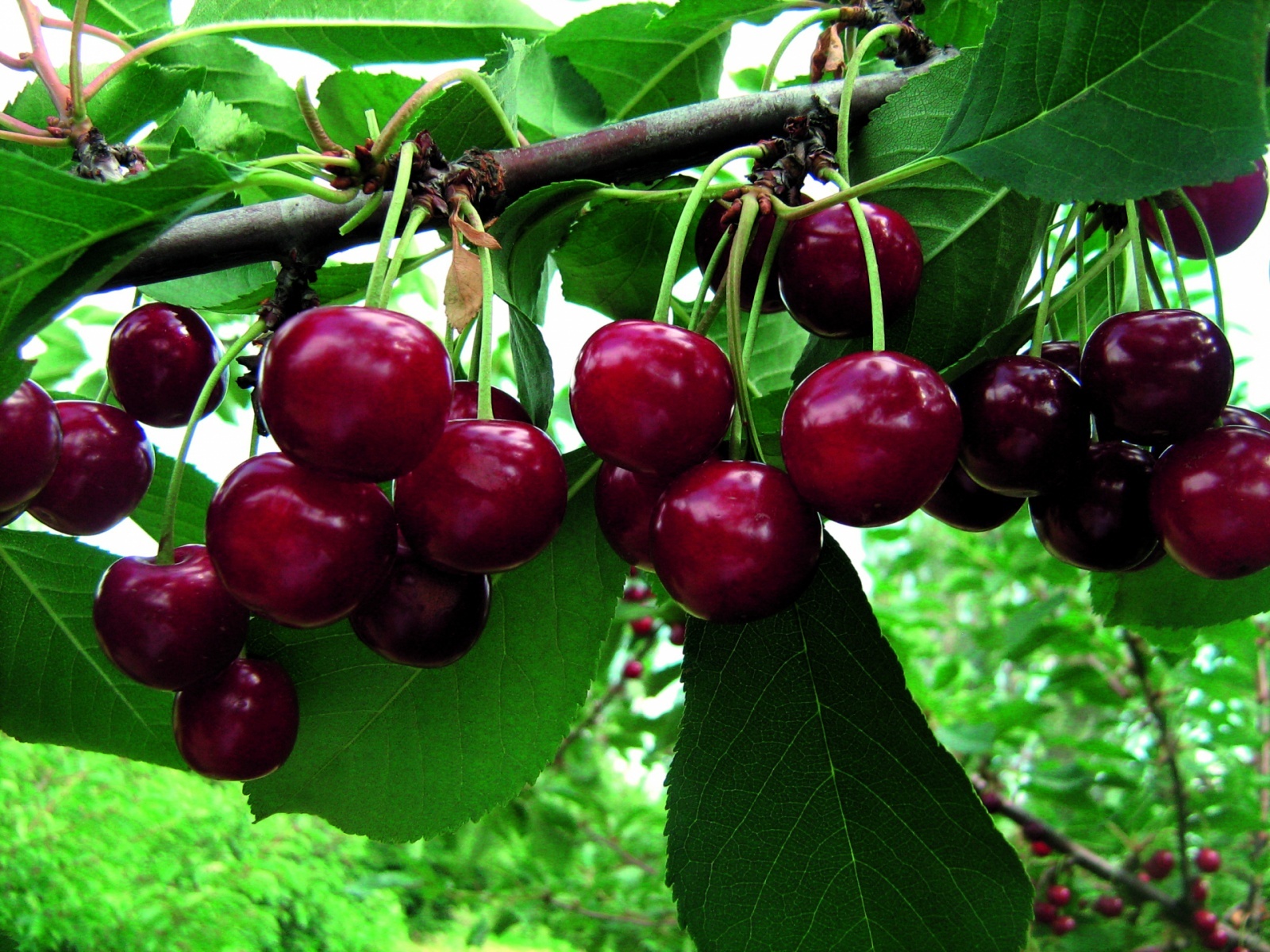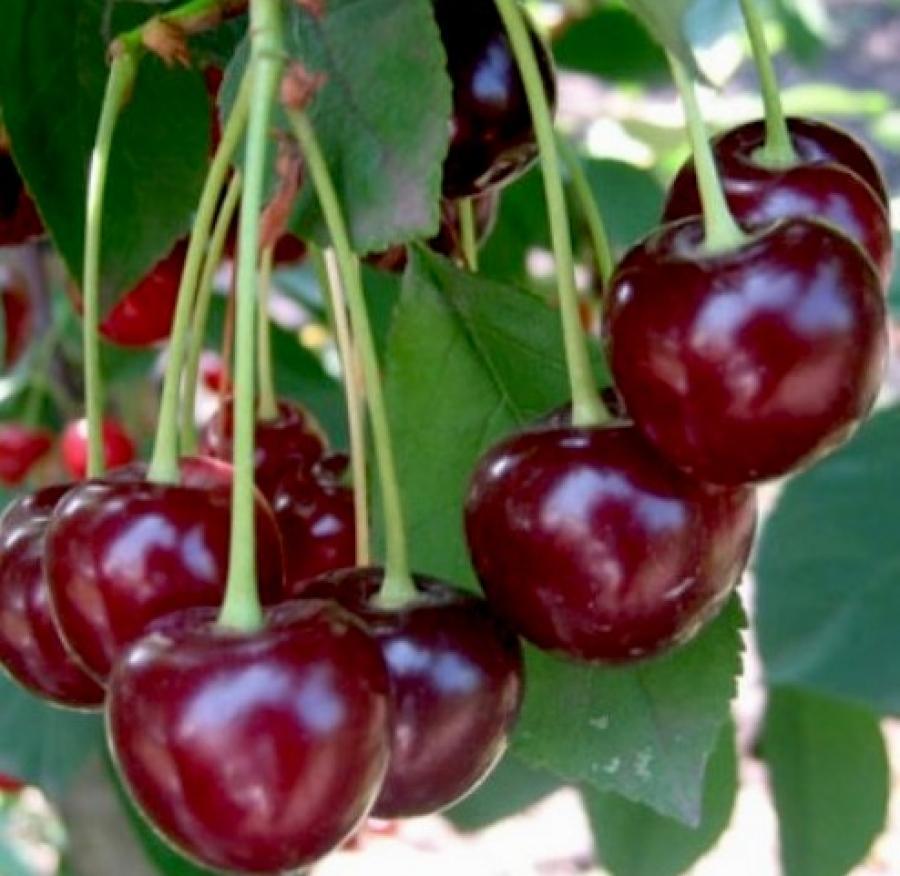Content:
This unpretentious tree is gaining more and more popularity in the vastness of Russia. This cherry came to us from East Asia, where it was found as a wild-growing shrub on the foothills of the Chinese, Korean and Mongolian republics. And we learned about this tree thanks to the famous Soviet scientist - botanist I.V. Michurin.
After planting several felt cherry trees, Michurin made a number of observations, described and concluded that this fruit tree can be grown in a temperate climate. Also thanks to him, a variety was bred that has larger fruits.
What is felt cherry
This is a rather low shrub in comparison with the usual fruit trees, which has several trunks and a dense wide crown. The height of the tree reaches 2 meters or slightly higher. Occasionally there are also higher specimens - more than three meters.
In perennial shoots, the trunks are quite dense, brown. Annual shoots are green-brown in color, with three buds located on them.
Cherry has double leaves, unusual pubescence, as well as berries and even young shoots. This gave the name to the shrub, because soft and light hairs are somewhat similar to felt. This protective property is necessary for the tree to reflect solar radiation, protects it from overheating.
The leaves have a corrugated, as if wrinkled, dark green surface with pronounced veins, and in the autumn they turn orange. The leaves emerge from the buds along with blossoming flowers. During a friendly and abundant flowering, from about the end of May, the tree is covered with light pinkish or snow-white flowers that can withstand a cold snap of up to -3 degrees for 10-15 days. During this period, the tree is very decorative from the densely clinging branches of flowers, which are attached to them on a very short stalk. The shrub turns into a blooming and fragrant ball. White flowers with a pinkish tinge, because of the short stalks, seem to grow directly from the branches of the tree.
The color of the berries ranges from dark cherry to pink, but sometimes trees with white or black fruits are found.
Felt cherries have juicy, sweet or slightly sour flesh with a small, hard-to-separate bone inside.
The bush bears fruit, again depending on the variety chosen, from June to mid-August, for about ten days. After planting, a young tree begins to bear fruit from 2 or 4 years old. Differs in crop stability, as well as drought and frost resistance.
Fruit yield from one tree ranges from 3-14 kg. Moreover, the berries can hang on the branches for a long time.
This little cherry is especially good for small backyards, where there is always a shortage of free space.
Unfortunately, the fruits of the felt cherry are very difficult to store and transport. Because of this, it cannot be seen on the shelves of shops and markets.
Fragrant and aromatic cherry blanks from felt varieties are very tasty:
· Jam;
· Jam;
· Jam;
· Compote;
· the juice;
Frozen berries.
The root collar of the bush requires increased attention, it has a tendency to podpevat, which is its weak point.
Felt cherry lives 8-10 years. To prolong the life of the tree, gardeners resort to anti-aging pruning.
Sometimes in woodlands you can find wolf berries, similar to felt cherries. They are very poisonous and dangerous.
What is the difference between felt cherry and ordinary cherry
Although the felt cherry (in Latin - Prunus tomentosa) is called cherry, it is only distant relative and has little in common with it, because it belongs to the type of plum. You should also know that ordinary cherries or sweet cherries cannot be crossed with felt cherries, therefore, as pollinators, they are not suitable for each other. And also they have no compatibility when grafting grafts.
Felt cherry begins to bloom two weeks earlier. Its berries have:
- sweeter taste;
- more organic acids, carbohydrates, vitamins C, B, PP;
- other beneficial substances: anthocyanins, flavanols and polyphenols.
It is resistant to coccomycosis, which can damage up to 80% of the fruits of common cherries.
Overview of varieties
Among the varietal variety, one of the most popular varieties can be distinguished.
Early varieties
- Cherry Natali is a tree with a wide crown of medium thickening. During flowering, gives pink large flowers. The yield from an adult tree is about 7 kg. Berries with dense pulp. Fruit weight is about 5 g. At room temperature Natalie felt cherry will be stored for 3 days, in a refrigerator drawer it will keep freshness for 7 days. Self-infertile variety.
- The Tsarevna's cherry has ovoid fruits, large in size, undersized shrub, strewn with pink bright fruits of sweet and sour taste. An adult bush bears up to 9 kg of fruit. This is a long-lived tree that lives up to 17 years. Self-fertile.
- Felt cherry varieties Children's - a tree of medium density. The pulp is dense, scarlet in color. The berries are large, egg-shaped, with a sweet and sour taste. Berry weight is about 4 gr. The bush is notable for its yield and reaches 15 kg. Self-fertile.
- The Skazka variety has burgundy berries, each weighing about 4 grams. A shrub with a crown of medium density. Productivity from a tree up to 10 kg. Self-fertile.
Medium early
The Morning variety has medium, red berries, weighing 3 grams, juicy. The crown is compact. The variety is resistant to fungus. Harvest up to 6 kg. It tolerates wintering well.
Mid-season varieties
- The Dark-haired woman has a short trunk, but the branches are wide enough. Fruits are small, burgundy in color. The taste is sweet and sour. Due to the small size of the bush, the yield is also small - about 7 kg. Self-fertile.
- In the Jubilee variety, the bush has a large and spreading crown. The berries are red, the fruit pulp is juicy and medium in size. The yield is no more than 9 kg. Self-fertile.
- Alice's felt cherry has a medium height bush, the crown is quite dense. Burgundy berry with pulp of sweet - sour soft taste. Self-infertile.
- Ogonyok's fruits are large in size. The taste is sweet with sourness, the fruits are juicy, light red. Self-fertile variety.
- Triana is undersized, up to 1.3 m. It blooms from mid-May. Fruit up to 4 gr., Pink. The pulp has a pleasant taste. Harvest just over 10 kg. Self-fertile, frost-resistant.
- The Beauty has a wide, oval-shaped crown. Berry weighing 3.5 grams, red, juicy, but poorly transported. Lives and bears fruit up to 16 years old, tolerates severe frosts well. Harvest just over 10 kg. Self-pollinated.
- Summer - the crown of the bush is not very dense, the fruits are large, fleshy, sweet and sour taste. The color of the berries is red, the weight is a little more than 3 grams. Harvest up to 7 kg. Poorly tolerates large frosts. Self-pollinated variety
- Salyut has a dense crown, the fruits ripen quickly and amicably. Berries weigh up to 4 grams, dark pink. The pulp is red, sweet with sourness. Bears fruit for 3 years. Long-lasting and productive - about 11 kg.Frost-resistant, can withstand up to - 35.
Late ripening varieties
The Damanka variety has rather large fruits, the color is burgundy. The taste of the fruits of this new variety can be given an excellent assessment, although the yield pumped up - only up to 10 kg.
Planting seedlings
Unfortunately, there may be some problems with the purchase of felt cherry seedlings. They are difficult to transport and store for a long time, as a result, such seedlings are almost impossible to find on the shelves of horticultural centers or in the markets.
The best time for planting felt cherries is spring. If you have to plant in the fall, it is better to do it no later than September. If the trees were purchased after September, you need to dig them in and leave them until spring comes.
The soil
Suitable soil for planting is sandy or loamy.
But absolutely not suitable:
- overly moist soils;
- rich in peat;
- places with standing water. This will negatively affect the growth of the tree, its productivity and the ease of wintering, and often causes the death of the tree;
- acidic soils. To correct the situation, lime can be added to the soil.
The landing site must also be chosen wisely: on a hill, in the sun.
Fertilizers
The shrub responds well to fertilization. First you need to dig a trench or hole 60 - 70 cm wide and up to 50 cm deep. Then add:
- phosphorus fertilizers - 40 or 60 grams;
- potash - from 20 to 30 grams;
- lime - from 400 to 800 gr;
- organics - 2-3 buckets.
The proportions are calculated for 1 sq. m.
Landing
Mix all applied fertilizers well. For planting, take a seedling 1-2 years old. Next, you need to cut the ends of the roots by 20 cm and lower their clay solution. Then lower the felt cherry seedling to the root collar - no deeper, otherwise the sprout may wither. The ground near the seedling must be compacted. The next step is to very carefully water the tree, and then mulch with organic fertilizers or peat.
Landing scheme: 3 or 3.5 meters by 1.5 meters.
As soon as the cherry blossoms in the spring, you need to add organic matter.
How to propagate felted cherries
If there is a problem with the purchase of seedlings, you can grow a tree yourself.
Underwire
Basically, felt cherries are propagated by planting seeds.
They should be collected, rinsed and dried a little. Toward the end of summer, place the bones in damp sand and leave them until late autumn in a cellar or any other cool place. Around October, the bones prepared in this way are planted in the soil, making grooves and deepening them by 2 cm.
And in the spring you can already see the first long-awaited sprouts. During the first year of development, seedlings grow up to half a meter and in autumn or spring they can be planted in a permanent place.
Cuttings
In July, cut off cuttings from a mature tree. The cut stalk itself should be at least 15 cm and taken from a branch of 2-3 orders of magnitude. Then you need to put them in water in which any growth regulator is dissolved:
- Heteroauxin;
- succinic acid;
- Kornevin;
- Zircon;
- Epin.
Leave it on for 15 or 18 hours. The next step is to plant the cuttings in the soil to a depth of 2 cm. Covered with bark + 1 cm. Green section of the shoot.
Then the cuttings must be covered with a film on top, creating greenhouse conditions for them.
Already after 14 - 15 days they have adventitious roots, and after 30 days - difficult to root.
Layers
In early spring, near a suitable shoot, dig a small hole up to 10 cm deep. Put the shoot in it and attach it to the ground with staples. Then it remains to sprinkle it with earth and do not forget to water it abundantly throughout the summer.
When autumn comes, young roots will appear on the handle. For further planting, it can be divided into parts or left intact.
If you properly plant varieties with different ripening periods around the site, you can feast on and harvest these wonderful and fragrant berries for the winter.And how much delight the felt cherry blossoming under the window in spring will cause!
